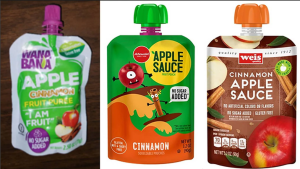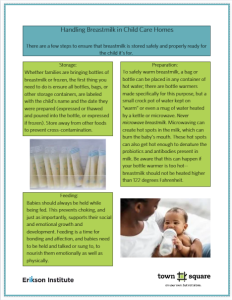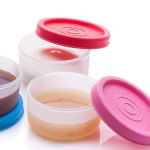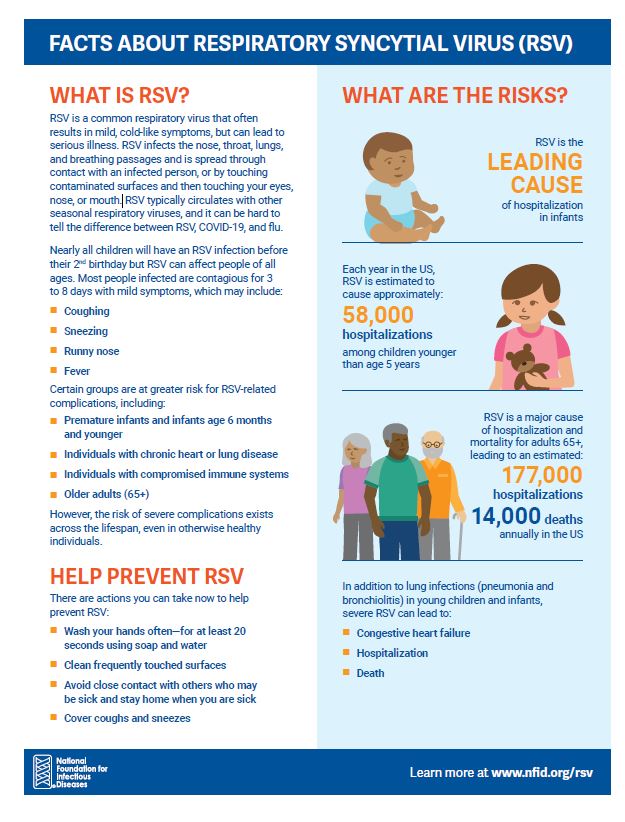As the weather warms up, it’s important to be aware of how to keep children (and ourselves!) safe in heat and humidity. When the heat index (“feels like”) is over 90° F, children are particularly vulnerable to heat-related conditions.
This chart from the National Weather Service shows both how the heat index is calculated, and when temperatures become hazardous.
Some Ways to Keep Children Safe in Heat (tips from the CDC and HealthyChildren.org):
- Move outdoor time to early in the day, before the sun is high.
- Apply and re-apply sunscreen– sunburn can cause dehydration and prevent the body from regulating temperature appropriately. Sunscreen is important for people of all ethnicities and skin tones.
- Have drinking water accessible at all times, and encourage (and model!) frequent water breaks.
- Recommend that families dress in loose, lightweight, and light-colored clothing. Use UV protective clothing and sun hats for extra safety.
- Keep cool with safe water play. A sprinkler, misting bottles, or water table can all help regulate body temperature and keep everyone in a good mood.
- Know the signs of heat-related illness and be prepared to act accordingly.
Handling, storing, heating, and feeding breastmilk can feel like it has a lot of steps.
This printable PDF reviews how to safely provide breastmilk to infants whose families provide it, including storage, preparation, and feeding. Below, you’ll also find a video from Head Start showing an Early Head Start teacher bottle feeding an infant and demonstrating responsive feeding and interaction with a baby at feeding time.
Gestión de la leche materna en cuidado de los niños
What do you notice in this video of the Early Head Start teacher feeding the baby? How does the baby respond to her actions and speech?
CACFP Week is a national education and information campaign sponsored annually the third week of March by the National CACFP Sponsors Association. The campaign is designed to raise awareness of how the USDA’s Child and Adult Care Food Program works to combat hunger. The CACFP brings healthy foods to tables across the country for children in child care centers, homes, and afterschool programs as well as adults in day care.
The theme of CACFP Week in 2024 is eating the rainbow!
When you register for National CACFP Week to let us know that you’ll be participating, we’ll send you a sample menu that focuses on eating a different color of the rainbow each day.
Visit the Campaign Page for resources, recipes, advocacy opportunities, and social media contests!
A safe environment that promotes health is the baseline expectation for a child care home. There are many policies and procedures to ensure that you, your family, and the children you care for remain healthy and safe year-round.
Providing balanced meals and snacks for children can be a challenge. Accommodating different preferences while remaining aligned with CACFP requirements and offering a variety of nutritious foods without large portions winding up in the trash might seem like a distant dream. Often, feeding concerns are really just a venue for power struggle. So how can we help children feel empowered to make their own choices at meal times? Try some of these tips, and see if the emotional climate of your meals changes.
Family style meals: instead of plating food for the children, teach and then allow them to serve their own portions. Even young toddlers can learn to scoop fruit or vegetables onto their own plate, and as they get older, they can build towards pouring beverages. If you’re concerned about your CACFP monitor, 7 CFR 226.20 — Requirements for meals states that when meals are served family style, “A sufficient amount of prepared food must be placed on each table to provide the full required portions of each of the components… for all children or adults at the table and to accommodate supervising adults if they wish to eat with the children and adults.” This means that even if a child initially takes a smaller portion of food than would be required if you had plated it, it still counts as long as there is enough food for them to have taken the full portion.
Modify tools to help children serve themselves: I’ve found that a recycled coffee creamer bottle is a great first tool for pouring milk or water, because the spout is very small and the bottle itself is easy to hold and hard to break. Some other easy and fun ways to help children serve their own food include small tongs or measuring cups, which have higher edges than serving spoons and can facilitate more food getting to the intended dish.
Collaborate with families or look around the world for inspiration for variety. Ask families what their children’s favorite meals are and what their favorite meals were as children. Try the same dish inspired by different cultures. Italian meatballs one week, albondigas the next, and Swedish meatballs after that!
Offer condiments: you can let children serve themselves (try smaller bottles with very small nozzles to prevent spills and overuse) or offer a pre-filled cup of sauce or dressing on the side for children to dip or pour over their food. An empty saltshaker on the table for children to use can also give a sense of autonomy without risking oversalted food.
Invite children to help you plan meals: Bring out the circulars and have them circle a fruit or vegetable they’d like to try. Make sure to give credit when you do serve it– “Thank you for picking out these big green kiwis to try at lunch today, Saamya!”
Don’t shy away from seasoning food well! While we may have an image of children preferring bland foods, often the taste they’re looking to avoid is “bitter”. That leaves a whole world of flavors to explore. Try lemony green beans; add cinnamon, turmeric, and black pepper to sweet potatoes; jazz up cooked zucchini with garlic and a sprinkle of parmesan.
Consider the Divison of Responsibility in Feeding, which states that it’s the adult’s job to offer balanced and nutritious meals, and the child’s job to decide how much of a food– if any– they’ll eat, and listen to their body’s cues. Remember that mealtimes are a way to build community. We don’t just eat for fuel; we share food, memories, and time together. When children are encouraged to participate, but not forced to clean their plate or eat something they dislike, they learn lifelong healthy habits.
Keeping the children in your care safe is a constant concern. The Head Start Early Childhood Learning and Knowledge Center has created a tip sheet for families about safety and injury prevention for young children that offers helpful guidelines for at home, outside, in water and in vehicles. This resource can be a helpful checklist to share with families.
Safety and Injury Prevention Tip Sheet
As of November 13, 2023, there have been 22 reports of illness potentially linked to recalled product submitted to FDA. As part of this investigation, FDA and state partners are collecting and analyzing additional product samples of fruit puree and applesauce pouches. At this time, sample analyses have not shown elevated levels of lead in any non-recalled products.
- Consumers should not eat, sell, or serve recalled WanaBana, Schnucks, or Weis-brand apple cinnamon pouches and should discard them.
- These products have a long shelf life. Consumers should check their homes and discard these products.
- Most children have no obvious immediate symptoms of lead exposure. If there’s suspicion that a child may have been exposed to lead, parents should talk to their child’s healthcare provider about getting a blood test.
- Contact your healthcare provider if you think you may have symptoms of lead toxicity after eating recalled fruit pouches.
WanaBana Recalls WanaBana, Weis, and Schnucks Apple Cinnamon Fruit Purée Pouches & Cinnamon Apple Sauce Due to Elevated Lead Levels | FDA
This four-part webinar with printable posters and resources from the National Center for Healthy Housing is specifically created for family child care providers to partner with families to prevent children and pregnant parents from coming in contact with lead and take necessary steps to remediate if lead is found in homes or via bloodwork, including links to financial assistance for lead remediation.
Babies born with high levels of lead in their blood are more likely to be born prematurely, be small for their gestational age, and grow more slowly than they should. Children exposed to lead may have developmental delays, learning difficulties, hearing loss, seizures, and more. Family child care providers can be great advocates for families in getting children tested for lead exposure and spreading information about places lead-containing materials may be hiding.
View all materials here: Lead-Safe Toolkit for Home-Based Child Care | NCHH
Staying informed about recalls that might impact your materials is one way to be sure that the items you and your children use each day are safe for them. The Consumer Product Safety Commission is the organization that tracks safety issues as well as voluntary and mandatory recalls for all the products in our homes, like the pictured cups which were recalled for lead level violations in July 2023.
To search or browse recalls, visit Recalls | CPSC.gov
To sign up for email updates from the Consumer Product Safety Commission, which will notify you of recalls and safety alerts, go to: Subscriptions | CPSC.gov
Protect the children in your care by knowing the facts about Respiratory Syncytial Virus (RSV). A viral disease primarily affects children but can occur in people of all ages. RSV infects the nose, throat, lungs, and breathing passages and is spread through contact with an infected person or by touching contaminated surfaces and then touching your eyes, nose, or mouth.
Be proactive and talk to your families about the importance of careful and frequent hand washing. Share the signs and symptoms of RSV and how it spreads. If you suspect illness, suggest the child see their doctor for a diagnosis. Go over your health policy, so they know when their child should stay home.
There is a new immunization available as of Fall 2023 for pregnant parents, infants under 8 months (and up to 19 months if they are severely immunocompromised), and all people over 60 years old that can prevent severe illness from RSV.







